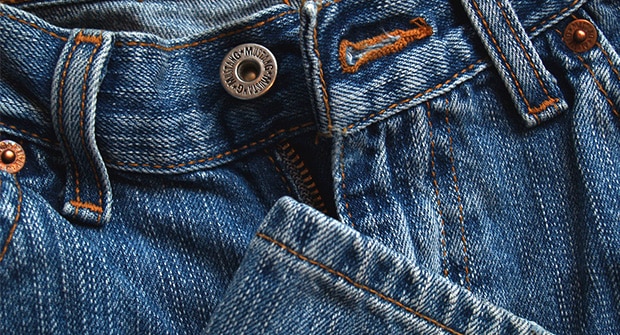Jeans took the world by storm. The average American owns seven pairs of jeans, and Americans across the country will purchase a combined 450 million pairs of jeans this year. That’s one popular pair of pants. You probably own several pairs yourself, but have you ever taken the time to think about the science behind your jeans? As it turns out, there’s more science to a pair of jeans than meets the eye…
PHYSICS
First, let’s take a look at where jeans were first born. Jeans started gaining traction back in the late 19th century when Nevada tailor Jacob Davis was trying to find a sturdy solution for local field workers and miners. He had great material – it was a perfect, tough combination of cotton duck and denim, a unique blue fabric that had a lot of character. Though the fabric was strong, workers still struggled with pants tearing at the seams where lots of friction and stress occurs. Davis came up with the idea of adding rivets to the corners of the pants. He drew up a plan for the new jeans and marked all of the places where stress points were the greatest and tears were most likely to occur. Davis then used copper rivets as reinforcements. When the word began to spread about the durable design, Davis couldn’t keep up with demand, so he wrote to his fabric supplier, Levi Strauss. Ever since then, jeans took over America like wildfire.
BIOLOGY
A student from the University of Alberta recently noticed that jeans always seem to have the appearance of being clean. Inspired by this observation, he tested the bacterial content of a pair of jeans that had been worn for two weeks, and subsequently, a pair that had been worn for 15 months without being washed. Amazingly enough, he found that the bacterial content to be about the same. As it turns out, the fabric making up jeans doesn’t allow bacteria to accumulate over time, even if you aren’t regular about washing your favorite pair of jeans.
CHEMISTRY
Scientists are now searching for ways to use bacteria to give jeans their signature blue color. Since blue jeans first gained their popularity, they have been dyed using indigo, the manufacturing of which causes water pollution. It takes a lot of indigo to dye jeans for the entire world, too… 20,000 tons a year, in fact. In search of a greener method, scientists took a closer look at how indigo plants create that amazing, deep blue color. Indigo plants themselves aren’t blue. The blue color comes from a molecule called indican that is trapped inside the plant. When the leaves of the plant are crushed, the indican reacts with the oxygen and the blue is produced. By using DNA from the indigo plant implanted in the experimental bacteria, scientists were able to train the bacteria to produce indican.
When you take a closer look, science affects everything in our world. That’s why STEM education is so important. Imagine the leaps forward we can take if this generation is inspired to follow a STEM career path.
Would you like to learn more about how to foster an interest in STEM education? Contact the team at StratoStar to learn more about how project-based learning can make all the difference.



